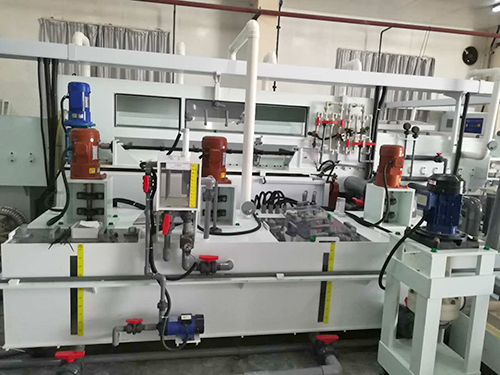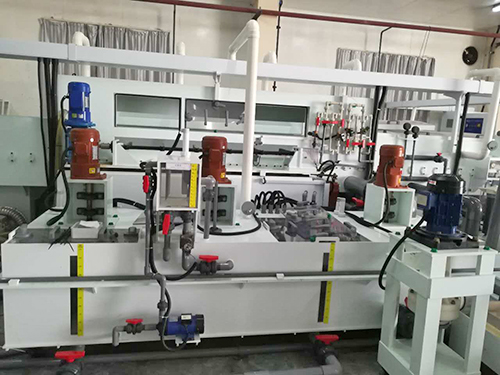Glass is widely used in modern times, and it has always been a product with very high demand in the market. Through the use of specific treatment methods, we can not only make full use of the characteristics of glass, but also make up for its shortcomings, and are no longer restricted by the natural properties of glass. Glass is originally a material with strong surface reflection, so it is easy to cause light pollution. However, there is a new type of AG glass equipment, which does not reflect strongly when exposed to direct sunlight and does not sting human eyes. Therefore, it is often used in some occasions that require high screen display. Next, we will introduce where the AG glass equipment is mainly used, and the manufacturing method of the AG glass equipment.
1. Where is the main application of AG glass equipment?
First of all, you must know that the purpose of using anti-glare is to reduce the reflection of the screen. After all, no one wants to use a screen that can't see anything in a slightly bright place.
Then, AG glass equipment is now used in more and more fields. For example, the AG glass equipment used for Kindle’s e-books, and the glass used in the vehicle will also be AG glass equipment, such as the center console. The dashboard, the multimedia in the back seat, and the AG glass equipment will have a very good visual experience.
In particular, ATM machines used a white piece of glass on it before, and the reflection was too serious. Banks gradually used AG glass equipment under pressure. However, the AG glass equipment is divided into spraying and etching, and the technical requirements for production are still low. It's a bit high.
Two. How to make AG glass equipment
AG glass equipment, namely low-reflection glass, is a kind of glass processed by a special process, which is widely used in frame mounting, screens, etc.
2.1 First, the glass is frosted. It is recommended to use low-reflective frosting powder, because the particles are more delicate for later processing.
2.2 Soak the frosted glass in a low-reflection treatment solution, rinse and dry to get the finished product.
Low-reflective glass has many names in the industry. It is frosted glass, but its cost is much higher than ordinary frosted glass. It depends on the light transmittance of the glass and can be tested with a special light meter.
It should be noted that tempered glass belongs to safety glass. It is treated at high temperature and then cooled rapidly in just a few seconds by blowing cold air. There will be some markings or even bumps on the surface of the glass. Therefore, if you want to make experienced low-reflection glass , No tempered glass is used.
Three, glass related concepts
Glass is an amorphous inorganic non-metallic material. Generally, a variety of inorganic minerals (such as quartz sand, borax, boric acid, barite, barium carbonate, limestone, feldspar, soda ash, etc.) are used as the main raw material, and a small amount of auxiliary is added. Made of raw materials. Its main components are silicon dioxide and other oxides. The chemical composition of ordinary glass is Na2SiO3, CaSiO3, SiO2 or Na2O·CaO·6SiO2, etc. The main component is silicate double salt, which is an amorphous solid with irregular structure. It is widely used in buildings to separate wind and transmit light. It is a mixture. There are also colored glass that is mixed with certain metal oxides or salts to show color, and tempered glass made by physical or chemical methods. Sometimes some transparent plastics (such as polymethyl methacrylate) are also called agricultural production system glass.




















